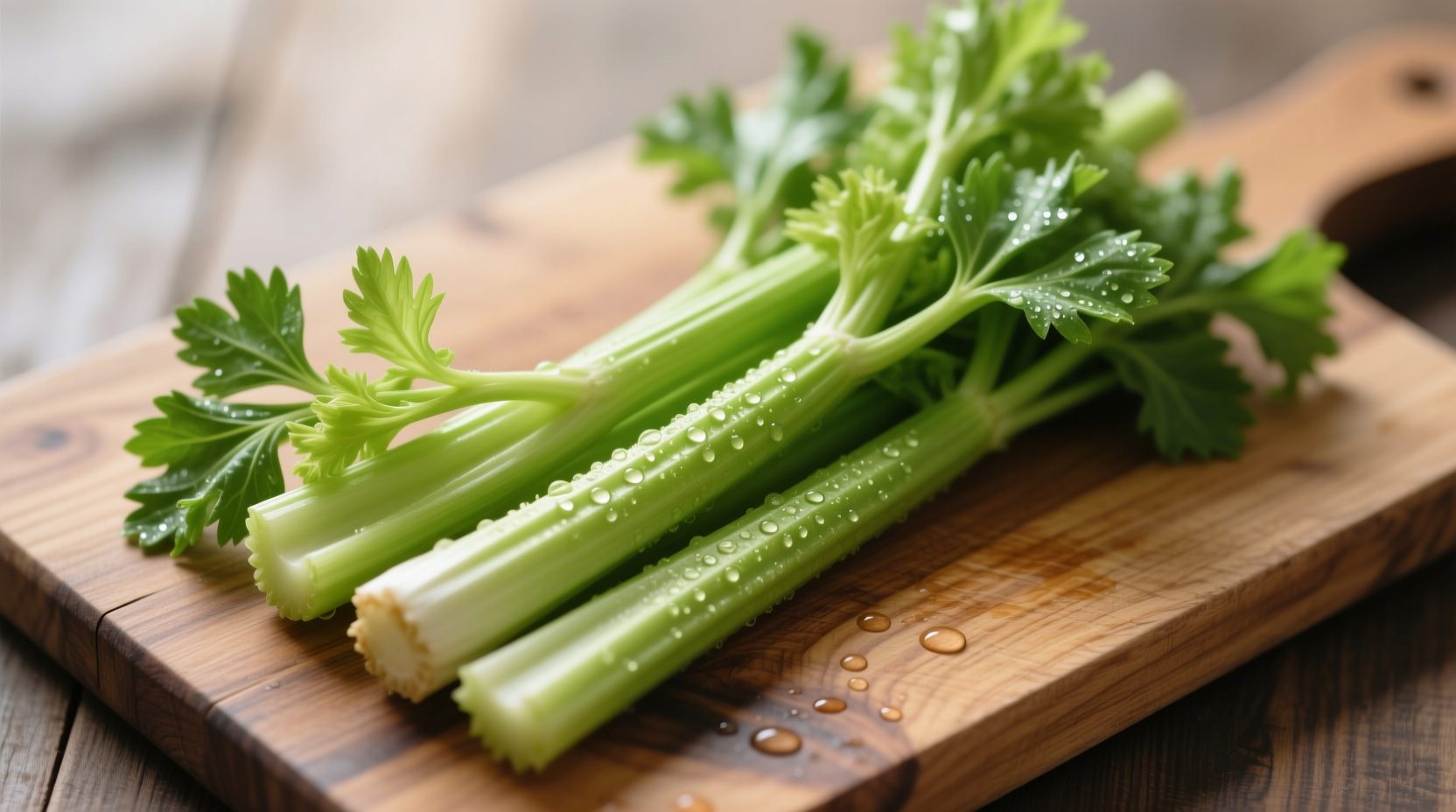Ever wonder why this crunchy green vegetable appears in so many professional kitchens and health-conscious diets? Beyond its role as a diet food or cocktail garnish, celery offers remarkable benefits that science continues to validate. In this guide, you'll discover exactly what celery is good for, with practical applications you can implement immediately - whether you're managing health concerns, elevating your cooking, or simply making smarter food choices.
The Nutritional Powerhouse You've Underestimated
Despite its reputation as a "negative calorie" food, celery delivers substantial nutritional value. One cup (101g) of chopped celery contains:
| Nutrient | Amount | Daily Value % |
|---|---|---|
| Calories | 16 | 1% |
| Fiber | 1.6g | 6% |
| Vitamin K | 29.6mcg | 37% |
| Vitamin A | 449IU | 9% |
| Potassium | 260mg | 7% |
Data sourced from the USDA FoodData Central database confirms celery's impressive nutrient density relative to its calorie content. What makes celery particularly valuable is its unique combination of phytonutrients including apigenin and luteolin, which researchers at the University of Missouri have identified for their anti-inflammatory properties.
Science-Backed Health Benefits of Celery
1. Blood Pressure Management
Multiple studies, including research published in the American Journal of Hypertension, demonstrate that celery seed extract can significantly reduce blood pressure. The compound 3-n-butylphthalide (3nB) found in celery appears to relax blood vessels and improve circulation. While eating whole celery won't deliver the concentrated doses used in studies, regular consumption contributes to cardiovascular health.
2. Digestive Health Support
Celery's high water content (95%) combined with its fiber makes it excellent for digestive health. Registered dietitians consistently recommend celery for its natural laxative effect without causing discomfort. The National Center for Biotechnology Information notes that celery's insoluble fiber helps maintain regular bowel movements while its soluble fiber feeds beneficial gut bacteria.
3. Inflammation Reduction
The antioxidants in celery, particularly apigenin, have demonstrated anti-inflammatory effects in multiple clinical studies. Research from the University of Chicago Medical Center shows these compounds may help reduce markers of inflammation associated with chronic conditions. While celery alone won't cure inflammatory diseases, it serves as a valuable component of an anti-inflammatory diet.
Culinary Applications: Beyond the Salad Bowl
The Flavor Foundation
In professional kitchens worldwide, celery forms part of the "holy trinity" (with onions and bell peppers) in Creole cooking and "mirepoix" (with onions and carrots) in French cuisine. Chefs prize celery for its ability to build complex flavor bases without overpowering other ingredients. When sautéed slowly, celery releases natural sugars that create depth in soups, stews, and sauces.
Texture and Freshness Enhancer
Celery's crisp texture provides contrast in dishes ranging from tuna salad to stir-fries. Food scientists note that its high water content helps maintain moisture in cooked dishes while adding minimal calories. Try adding finely diced celery to tuna or chicken salad for crunch without mayonnaise overload.
Unexpected Culinary Innovations
Modern chefs are discovering celery's versatility beyond traditional applications:
- Celery leaf pesto as a vibrant alternative to basil
- Pickled celery for charcuterie boards
- Celery juice as a cocktail mixer
- Celery root puree as a lower-carb potato substitute

Practical Usage Guide
Selection and Storage
Choose celery with crisp, pale green stalks and vibrant leaves. Store in the refrigerator wrapped in aluminum foil for up to two weeks. Contrary to popular belief, storing celery in water actually accelerates spoilage by promoting bacterial growth.
Maximizing Nutrient Retention
To preserve celery's nutritional value:
- Wash but don't peel (nutrients concentrate near the skin)
- Cut just before use (cutting accelerates nutrient loss)
- Use leaves (they contain more nutrients than stalks)
Contextual Considerations
While celery offers numerous benefits, it's important to understand its limitations. The blood pressure research primarily used concentrated celery seed extract, not whole celery. Similarly, while celery supports hydration, it shouldn't replace adequate water intake. People taking blood thinners should monitor celery consumption due to its vitamin K content, and those with celery allergies (more common in Europe than North America) should avoid it entirely.
Common Misconceptions
Let's address popular myths about celery:
- Misconception: Celery has "negative calories"
- Reality: While celery is extremely low calorie, the thermic effect of digestion doesn't exceed its caloric content
- Misconception: Only the stalks are edible
- Reality: Leaves contain higher concentrations of nutrients and flavor
- Misconception: Organic celery is significantly more nutritious
- Reality: Nutritional differences are minimal, though pesticide exposure is reduced
Implementing Celery in Your Daily Routine
Start small with these practical applications:
- Add chopped celery to morning smoothies (the flavor blends well with apple and cucumber)
- Use celery sticks as a vehicle for healthy dips like hummus or Greek yogurt
- Include celery in your vegetable broth for added depth
- Try celery salt as a lower-sodium seasoning alternative











 浙公网安备
33010002000092号
浙公网安备
33010002000092号 浙B2-20120091-4
浙B2-20120091-4